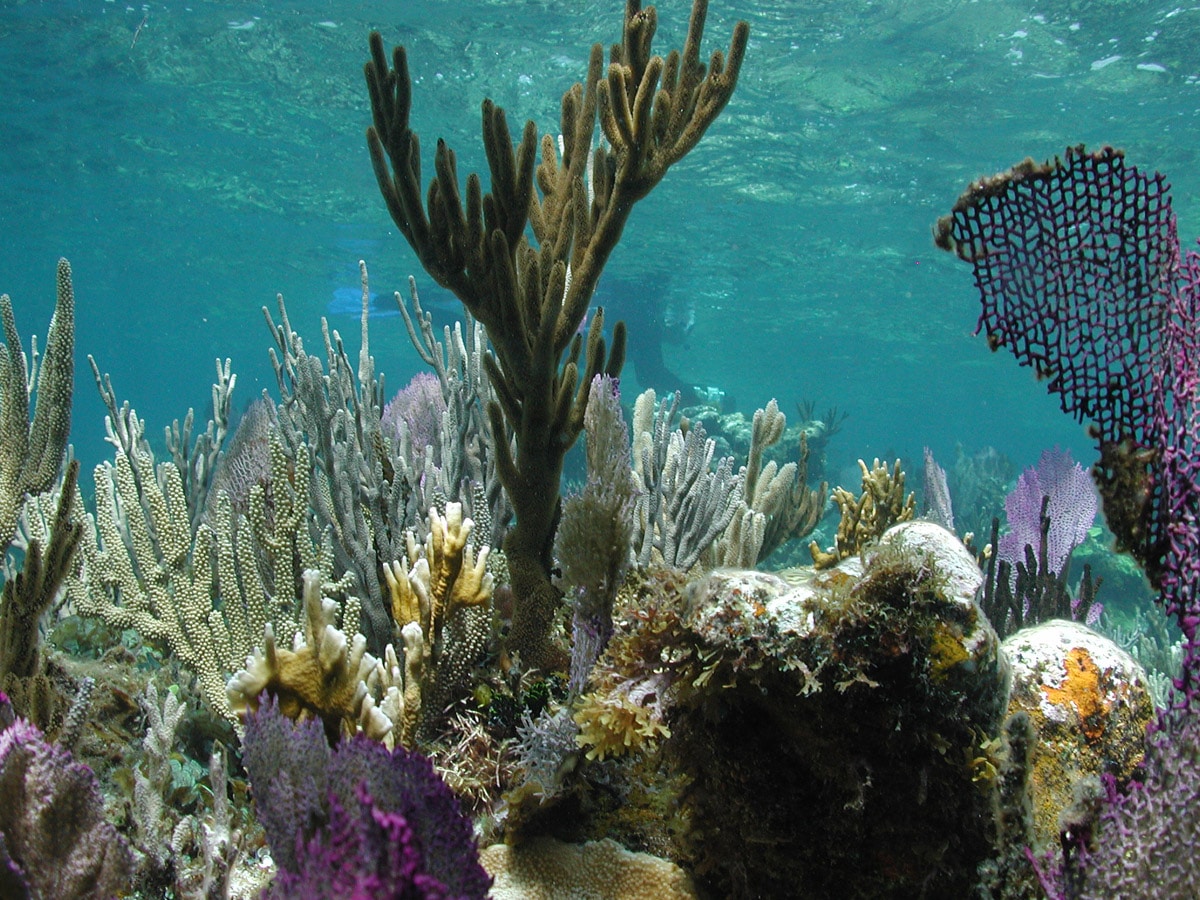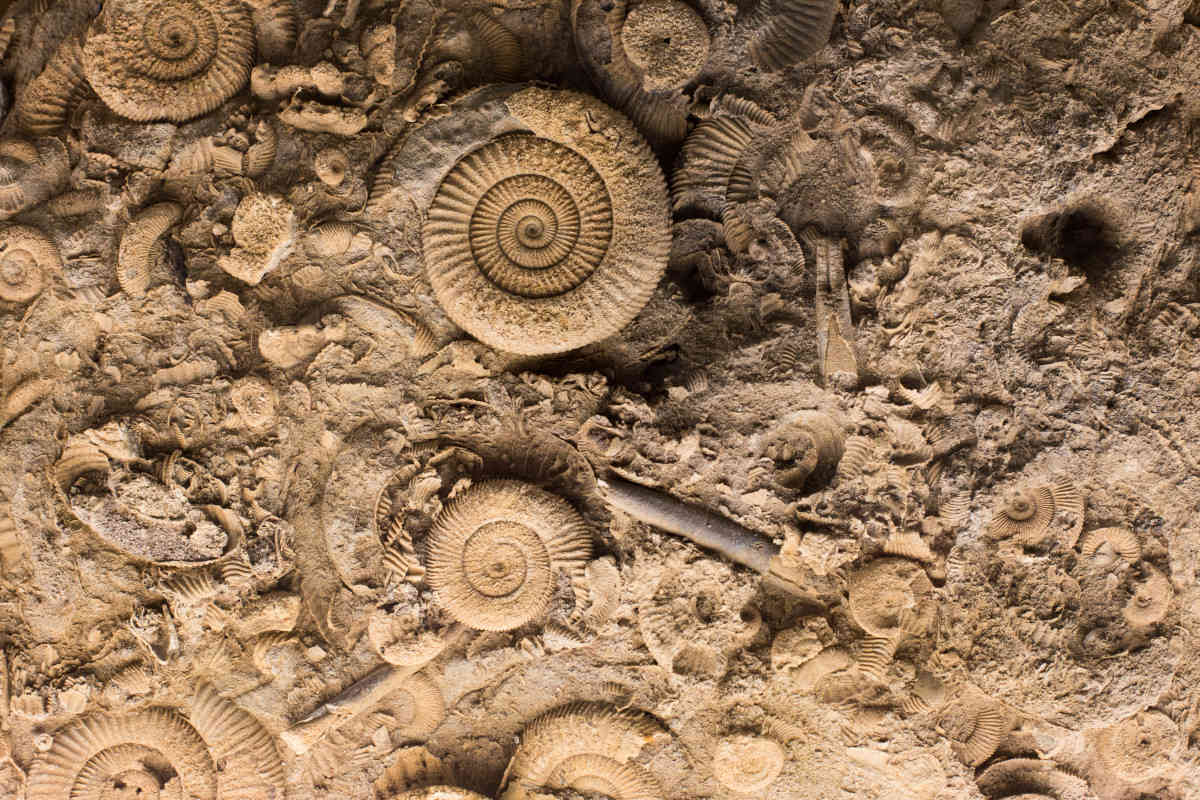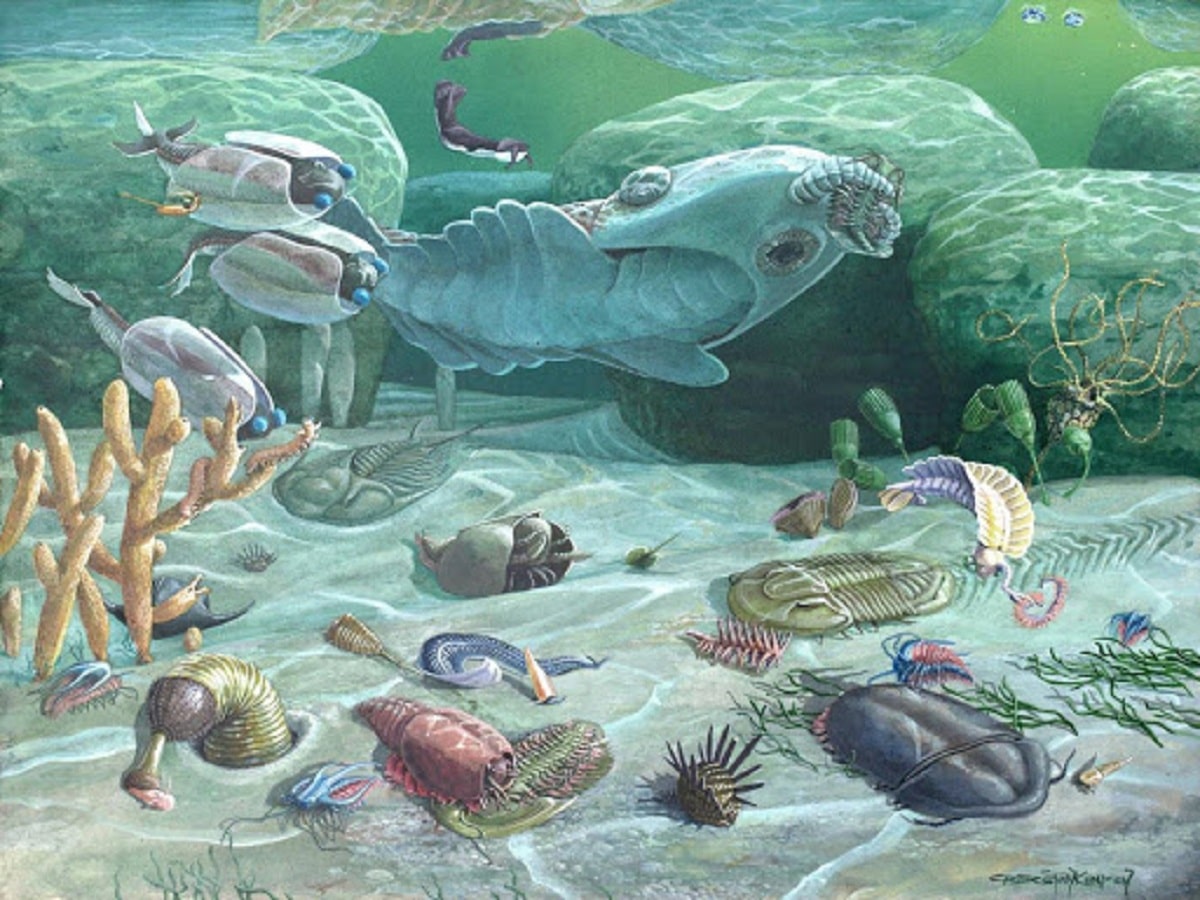
El Cambrian period is the first to compose the Paleozoic era. It began about 541 million years ago and lasted until about 485 million years ago. It is in this period where our planet witnessed a great diversification and massification of existing life. The Cambrian fauna He was the protagonist of the so-called "Cambrian Explosion". It is here where a large number of animal species appeared that were already multicellular and that began to populate the seas.
In this article we are going to tell you all the characteristics and evolution of the Cambrian fauna.
Cambrian period

First of all, we are going to review some of the main characteristics of this geological time period. It is one of the geological eras that has been most studied by paleontological specialists. And it is that there has been a great amount of changes at the geological level and evolution of existing living organisms. All this has been due to a drastic change in the environmental conditions that existed at that time. We know that this period lasted approximately 56 million years. Among the main characteristics we find a diversification and evolution of the living beings that populated the planet.
Thanks to these changes, numerous new edges of living beings began to exist that have been maintained until today. Regarding geology, among the most significant changes were the relocation and fragmentation of the existing supercontinents. The vast majority of specialists affirm that there are various fragments of the earth's crust that were in the Cambrian period and that they were the result of the fragmentation of an even larger super continent. This super continent called Pannotia was divided into 4 others known by the name of: Gondwana, Baltica, Laurentia and Siberia.
The speed of continental drift during this period was much higher than it is today. This caused the fragments to separate with greater speed. Regarding the climate, there are few records but there are some fossils with which the environmental characteristics have been studied. It is stated that during the Cambrian the temperatures were considerably higher than those of other geological periods. This is because there were hardly any ice fragments on the planet. Almost the entire northern hemisphere was covered by the Phantalassa Ocean and the climate was temperate and oceanic in type.
Regarding the climate we also know that there were some seasonal oscillations in such a way that it is stated that they did not have too many abrupt changes. However, some specialists claim that at the end of the Cambrian a decrease in global temperature could be observed. This causes some continent that was moving more slowly to be covered by ice.
Life

With regard to life in this period is the so-called Cambrian explosion thanks to which an unusual diversification of all life forms occurred. Although life appeared in the Archaic aeon, it was not then until the Cambrian period that it was able to diversify since the rest of life was very simple. This phenomenon is known since most species could evolve. A great diversity of living things appeared almost simultaneously. Thanks to the fossil record, a large amount of information has been recovered. The reasons for the Cambrian explosion have not been able to establish specifically what were the beginnings by which life could diversify.
It is estimated that they were the following causes:
- Increase in atmospheric oxygen
- Increased ozone levels in the ozone layer and protection from harmful ultraviolet radiation.
- Increase the sea level. This meant that the possibilities of housing a greater number of habitats, ecological niches and, therefore, a greater number of species could be increased.
Cambrian fauna

The Cambrian fauna inhabited mainly in water. All ecosystems were very extensive and were found in the oceans. Most of the animals that make up the Cambrian fauna were complex invertebrates. Here we find the trilobites, some large invertebrates and other groups like they are mollusks, sponges and worms. We are going to analyze one by one the most abundant species of the Cambrian fauna:
Sponges
During this period it was common to find large numbers of sponges on the seabed. Today they are classified in the poriferous edge. Its main characteristic is that of having poles throughout its structure. Through these pores they help to circulate and filter the nutrients found in the water. The fossil records of these organisms have helped to obtain information about the development of these animals at that time. Thanks to these fossil records, it is known that there were sponges similar to the structures of trees and others with a cone shape.
Arthropods
They were the most developed and numerous animals. Today, they remain the most abundant phylum of animals in the animal kingdom. In the Cambrian fauna this was no exception. Within this group, we find the most representative as trilobites. They abounded in this period of almost maintained their existence until the end of the Permian period. They were one of the first animals to develop the sense of sight.
Cambrian fauna: mollusks
Mollusks underwent great transformations diversified into various classes. Some of them are still found today. We have gastropods and cephalopods, among others.
Echinoderms
It had a lot of expansion and diversification during this period. New species of echinoderms appeared that could adapt to the different existing environmental conditions. The class that survived the longest was the crinoid.
Cambrian fauna: chordates
It was the most important group of animals that had its origin in this period. Thanks to these animals it is known that the Cambrian fauna diversified a large number of groups such as the vertebrates among which we have amphibians, fish, reptiles, birds and mammals. The distinctive feature of these animals is that they have a structure known as the notochord. Hence the name chordates. The notochord is a tubular cord that extends throughout the entire dorsal part of the individual and has a structural function. There is also a central nervous system, a post anal tail, and a perforated pharynx.
I hope that with this information you can learn more about the Cambrian fauna and its characteristics.